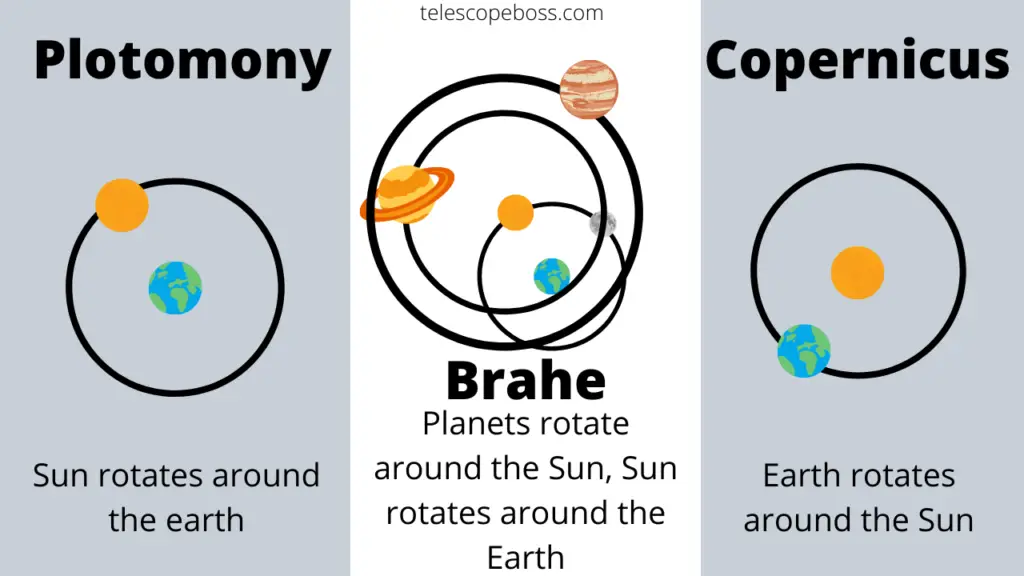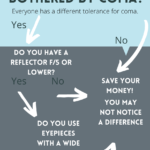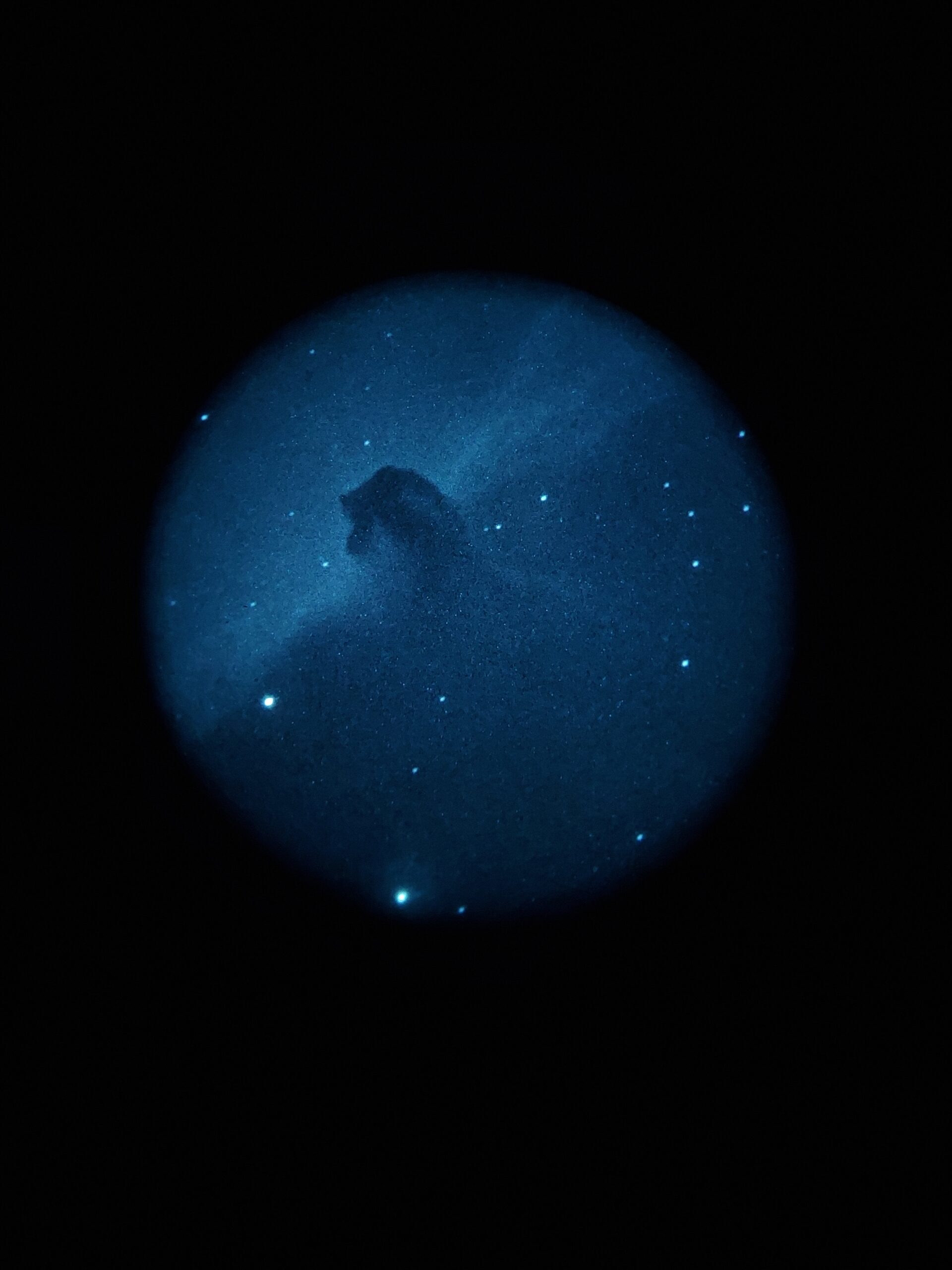Tycho Brahe was an astronomer and mathematician who lived before the invention of the telescope. Through careful observation of the night sky he accurately mapped over 1,000 stars. He described a more accurate model of the movement of the Earth, Sun and Planets, and his notes led to the discovery of elliptical orbit paths by Johannes Kepler.
Tycho Brahe made his most important discoveries by observing the night sky. At the time we believed that the sky was unchangeable, and that anything new in the sky was simply in Earth’s atmosphere.
This idea that the heavens were unchangeable was a belief presented by Aristotle. Yes, his discoveries upended ideas presented by Aristotle! Brahe’s observations were so revolutionary to our understanding of space that it changed astronomy forever.
Brahe observed a new object in the sky that did not seem to move relative to the stars that surrounded it. This careful observation led Brahe to believe that the object must be in space.
We now know that it was Brahe’s SuperNova.
In 1577 he observed a comet moving through space, this discovery disproved the old idea that planets and stars rotated on material spheres, the observation of a comet moving through the spheres ended that model of the universe, which was completely rejected by 1625.
While Tycho Brahe did observe that the planets orbit the sun, he still believed that the sun rotated around the earth. This was an intermediate step between Plotomony’s Earth centric model of the universe and the eventual discoveries by Copernicus who set it all correct.

His observations were based on the concept of Parallax. The observable effect of objects closer to the observer moving more quickly than objects further away. While observing the comet he observed that while it had parallax, it did not have as much as the moon, so therefore it must be further away than the moon.
Operating with this knowledge allowed Brahe to make such accurate measurements. Previous records seem to be accurate within about 15 arcminutes while Brahe’s measurements seem to be accurate between ½ and 2 arcminutes. .
The accuracy of his observations make the incredible work of Johannes Keppler possible. Kepler was Brahe’s assistant at the end of his short life. Kepler’s Laws of Planetary Motion would not have been possible without the work of Brahe.
Tycho Brahe’s Discoveries
Tycho Brahe wrote and published a few papers about his observing processes and instruments. These papers, “Instruments for a Restored Astronomy” and “Introductory Exercises Towards a Restored Astronomy” showed that Brahe was doing this differently.
His discoveries changed the way astronomy was done during his life and after his death.
I will give a brief overview of his most important discoveries.
Space can change
Brahe’s discovery that new things can appear in space changed the fundamental philosophical belief that the heavens were unchangeable and perfect.
Aristotle taught that the ever changing corrupt Earth was a separate realm from the heavens as they never changed. He called them “terrestrial spheres” and “celestial spheres.” This belief was held for centuries until disproved by Brahe.
Spherical Shells
Before Tycho Brahe, it was believed the planets and stars were fixed to actual spheres that were tightly fitted together.
This was part of why space was so pure and unchangeable.
Brahe observed a comet moving though these supposed spheres and that changed our understanding of the movement of stars and planets.
This set the stage for astronomers like Capurnicus and Kepler to make their discoveries.
Planets Orbit
During Tycho Brahe’s life it was believed that planets, moon, sun and stars rotated around the Earth.
After observing many movements of the stars and planets Tycho Brahe came to the conclusion that the planets must rotate around the sun.
Because of the current understanding of physics it was impossible for Brahe to believe that the Earth could be rotating, so he believed that while the other planets orbit, the Earth stays put.
This intermediate step allowed for the eventual Capinucuran heliocentric model of the universe.
Atmospheric Refraction
A smaller contribution of Brahe is the idea of atmospheric refraction. This distortion of the observable atmosphere was recorded in 3 tables by Brahe, one for the bending of light by the Sun, one for the stars and one for the moon.
He was the first recorded astronomer to consider this in his observations.
Tycho Brahe’s Tools
He had an enormous observatory given to him by King Fredrick of Denmark. This observatory was more like a castle and was built on the island of Hveen.
Brahe called his observatory Uraniburg, and it had many instruments developed by or improved by Brahe.
Tycho Brahe was very particular about the measurements he accepted. He only accepted measurements that were accurate when repeated, if they were repeatable. He also only accepted new instruments that could be proven accurate against his library of instruments that he had tested and tried.
While Brahe made amazing discoveries with his instruments, the telescope had not yet been invented. Tycho Brahe was the last major astronomer to work without a telescope.
The most well known instruments used by Brahe were:
Sextens
Sextens are used to measure the angular distance between stars. Nautical Sextens were used for navigation on ships, but the technology was adapted for astronomy.
Sextens can be very large and often require more than one person to operate. Brahe is known to have had quite a few assistants at Uraniburg who no doubt make careful observations with the help of Sextens.
Quadrants
Tycho Brahe had a very large quadrant affixed to the wall of his observatory and it could be used to calculate angles of stars, longitude and latitude and other positional data.
While this was a widely used piece of astronomical equipment, Brahe made them tiny and enormous to make his measurements as accurate as possible. Tycho Brahe used a type of quadrant known as a Mural Quadrant. He created one of the largest known.
Armillary Spheres
Armillary Spheres are models of the celestial spheres rotating around the earth or the sun.Tycho Brahe was known for improving on existing astronomical equipment.
The armillary sphere was well known before his time but he built large and complex models.
Tycho Brahe’ Early Life
Tycho lived a very epic life with many twists and turns. You can find more information in the referenced articles, but here are some highlights:
- Brahe was born to Danish nobility
- Brahe was kidnapped at age 2 and raised by his uncle
- At the age of 20 he lost a large part of his nose in a duel with a fellow student
- He began studying law at University of Copenhagen, but soon switched to astronomy
- He had a pet elk, but it might have been a moose
- Tycho Brahe studied astronomy after witnessing a solar eclipse when he was 13 on August 21, 1560
- In 1601 he died at the age of 54, it may have been from a bladder infection, or (but probably not) mercury poisoning
- He was the last major astronomer to work without a telescope.
References:
https://adsabs.harvard.edu/full/1988IAUS..133…87M, http://galileo.rice.edu/sci/brahe.html,





